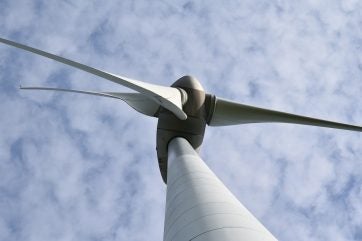
Work has begun on the construction of the world’s tallest wind turbine in the eastern German lignite region Lusatia, report technology website ‘heise online’ and online agency Clean Energy Wire. The foundation stone was laid on 19 September in Schipkau, state of Brandenburg, and operations are scheduled to start next summer. The planned height of the turbine is 364 m including blades.
The commissioning company Beventum and project developer Gicon measured wind speeds using a 300 m high measuring tower at the site, according to regional broadcaster MDR. The developers believe this elevation will substantially increase wind energy yield, perhaps by as much as 40 %.
“At this altitude, the wind has higher average speed, but also a wider distribution, which leads to significantly more full-load hours for wind turbines,” said Gicon founder Jochen Grossmann. He said conditions are comparable to offshore wind turbines, but with onshore operating conditions. “This means that the costs for construction and maintenance are significantly lower” said Grossmann. He suggests that high-altitude wind turbines could also be used to develop so-called low-wind regions, where it has not been possible to utilise wind energy economically to date.
The wind turbine will feature a novel design involving a lattice structure with four legs, reminiscent of the Eiffel Tower in Paris, as well as power poles. The turbine will be attached to a movable inner tower, which will allow it to be lifted to a height of 300 metres – a height out of reach for cranes.
There was no opposition to the project from local residents, who were involved from the outset, Gicon said. The new turbine does not require any additional space, because it will be built between existing wind turbines, but at a height where the rotors do not take the wind away from each other. Gicon has said in the past that high altitude wind turbines would allow renewable energy production on three levels: Solar panels on the ground, conventional wind turbines, and a layer of high altitude turbines above.






